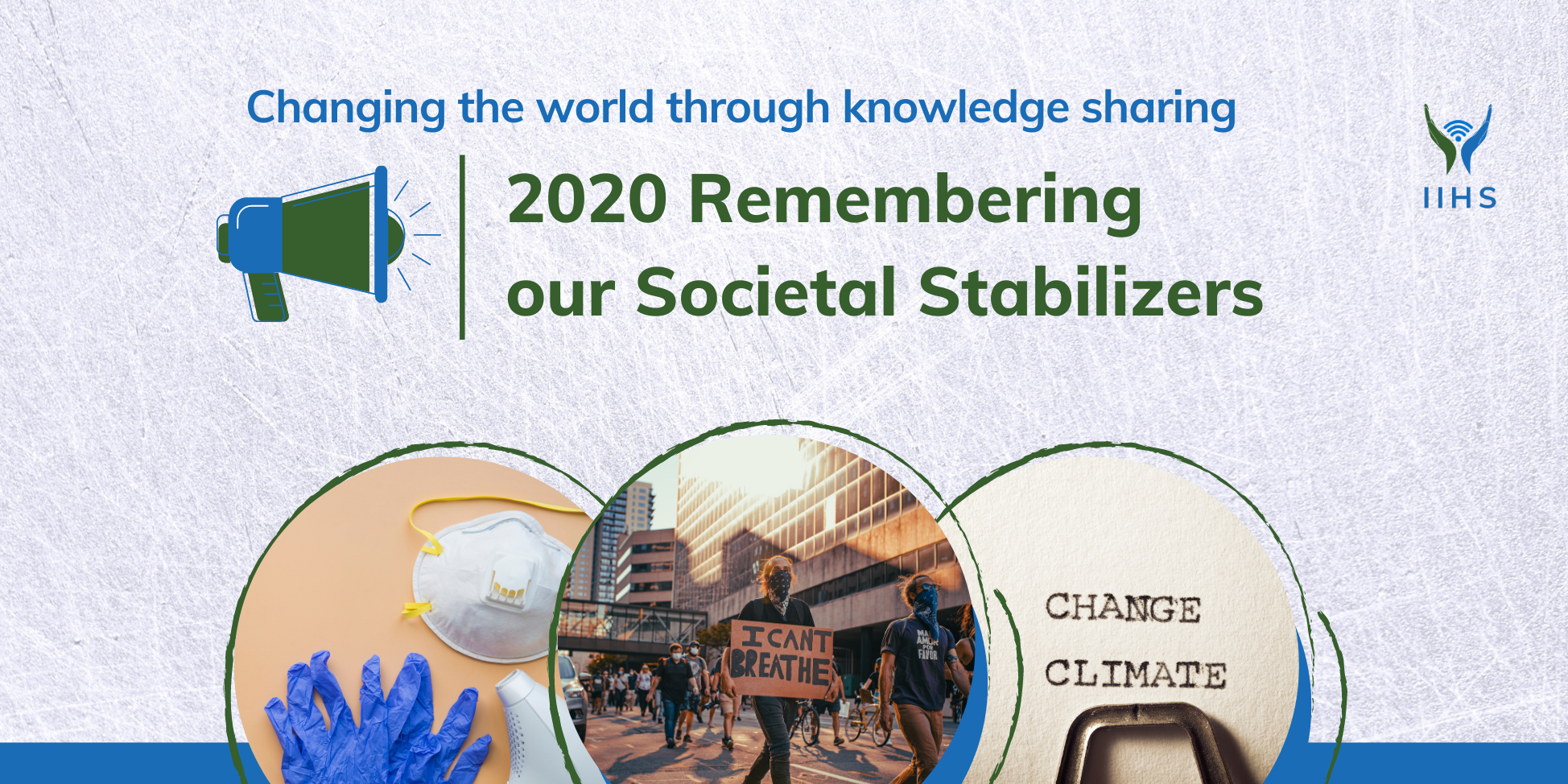The third article and long-read in our 2020 series, Remembering our Societal Stabilizers was written by IIHS Advocacy Associate Amina Agha at the beginning of the year. While much has changed since then, the message is as relevant and clear now as it was on the day it was written and we urge the world not to forget the threats facing human security that existed before the pandemic and continue to persist today. We invite you to engage with this stabilizer and consider what steps we ought to take in order to move towards security for all as we go into 2021.
The 2020 link: climate protection, peacebuilding and sustaining peace
The global climate emergency calls for bolder climate actions as the world runs out of time to meet the 2030 hard deadline of cutting its global carbon emissions by 45%. This has made 2020 a defining year. “The world is counting on all of us to rise to the challenge before it’s too late,” said UN Secretary-General, António Guterres, during a speech in 2018. “If we do not change course by 2020, we risk missing the point where we can avoid runaway climate change with disastrous consequences for people and all the natural systems that sustain us,” he noted, calling it a “direct existential threat” to humankind.
The climate crisis and consequential threat to the survival of mankind, through an irreversible loss of the Earth’s natural and human systems, demands our urgent attention. Anthropogenic global warming has already wreaked havoc on the Earth’s natural systems, exceeding its bio-geo capacity. One of its most noticeable threats is the rising temperatures and more frequent heatwaves in most land regions. The world witnessed its warmest years, from 2014 to 2018, breaking historical records of the past 139 years. Elevated temperatures dried out foliage and sparked massive wildfires across the globe in the hardest-hit regions. In the Arctic this year, an unprecedented number of wildfires released 50 megatonnes of CO2 into the atmosphere in a single month, equivalent to Sweden’s total emissions annually. The record-breaking European heatwave triggered wildfires in many countries and in the outskirts of Athens. It claimed 91 lives, making it the most deadly wildfire season in Europe since the 1900s.

Image: Unsplash
The heat is drying out forests fast. A recent study indicates that the Earth’s boreal forests are burning at a rate that exceeds the fire regime limits of the past 10,000 years. In 2014, fires in Canada burnt more than seven million acres of forest cover and released more than 103 million tonnes of carbon into the atmosphere, which is half of what all the plants and trees in Canada typically absorb in one year. The significance of this can be estimated from the fact that Canada’s boreal forest alone stores the equivalent of more than 20 years’ worth of the world’s emissions from the burning of fossil fuels.
Similar concerns are echoed by scientists in regard to the Arctic’s permafrost. The climate crisis is thawing out permanently frozen soil and land, releasing massive stores of carbon that have been locked in ice for millions of years. About one-third of the Earth’s stored soil carbon is present in the Arctic and the sub-Arctic regions. Rising temperatures in the high northern latitudes would release carbon into the atmosphere, leading to higher temperatures in a vicious feedback loop. The IPCC has recently started taking permafrost carbon feedback into account, but emissions from abrupt thawing have not been included in its projections. Contrary to previous predictions, Arctic permafrost is not thawing gradually. If it continues to thaw at the current rate, Earth’s permafrost regions will become a carbon source rather than a carbon sink by 2100, releasing catastrophic amounts of carbon into the atmosphere.
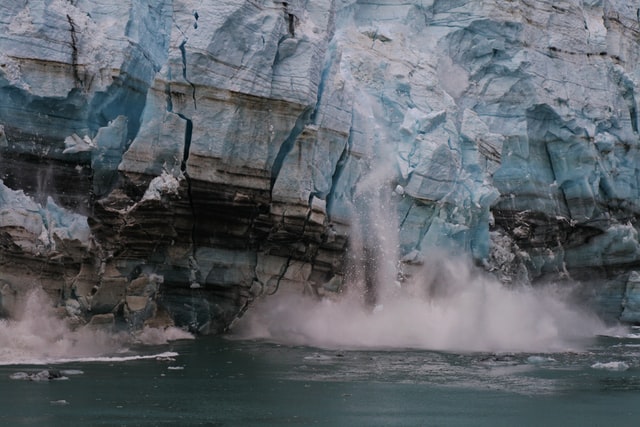
Image: Unsplash
Empirical evidence regarding the presence of methane in the Arctic meltwater has also recently been put forward by researchers. Methane is around 20-28 times more potent than C02. During one of the studies, it was observed that the greenhouse gas was continuously escaping from the meltwater beneath the Greenland ice sheet due to global warming. The presence of methane-making microbes, called methanogens, was also revealed in the study. These microbes have been living under ice for around 35 million years feeding on organic matter and creating methane. The potential ramifications of the massive release of methane super-saturated waters from the Arctic need to be accounted for in our climate projections. Increased atmospheric methane concentrations as a result of positive feedback due to instability in methane reservoirs of the Arctic has great potential to accelerate climate change, even as we struggle to cut our emissions.
The Arctic and Antarctic ice-melt also poses a grave risk of exposing humans and wildlife to diseases that have for a long time lain dormant, due to the revival of viruses and bacteria trapped in permafrost. In 2005, NASA scientists revived a 32,000-year-old bacteria frozen in a pond in Alaska. In a similar study, an 8 million-year-old bacterium encased dormant in the ice in Antarctica was revived when the ice melted. In a similar case, spores of Anthrax that are resistant to harsh climatic conditions were discovered. We are already experiencing the horror of viruses coming back to life in the wake of rapidly melting permafrost. In 2016, around twenty people were hospitalized after being infected by Anthrax in the Yamal Peninsula in the Arctic Circle, claiming the life of a 12-year-old boy. The corpse of a reindeer infected with Anthrax and buried in permafrost 75 years ago released infectious spores into the water and soil when permafrost thawed during the heatwave of 2016. More than 2,000 reindeer became infected with the virus. The incident was a stark reminder that our immune systems are inadequately prepared for pathogens that we have not been in contact with for a long time. Hence, the release of ancient viruses by global warming in the Arctic could claim the lives of many in the future if we are not adequately prepared.
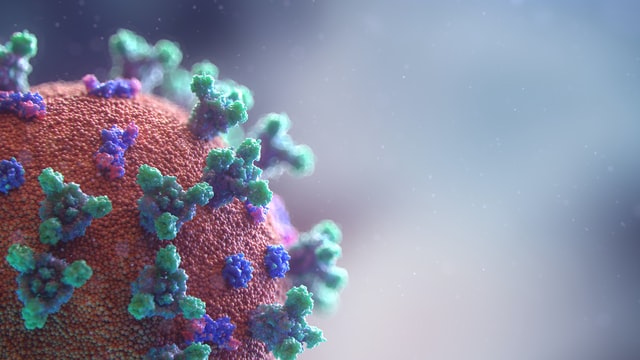
Image: Unsplash
Climate change is exasperating our vulnerabilities
Vulnerable populations around the world are facing the consequences of retreating ice sheets due to elevated temperatures. When heatwaves settled for an extended stay in Greenland this year, 12.5 billion tons of ice were lost in a single day. This rapid loss of the Arctic sea ice released water at record rates and caused global sea levels to rise 0.5 mm in just a month. Secretary-General of the World Meteorological Organization called it “the reality of climate change” and warned that “it will worsen in the future without urgent climate action.” The accelerated pace at which this has happened was not forecasted until 2070. and is a wake-up call to the rest of the world that climate model projections in the past may not have been sufficiently adequate to accurately anticipate such extreme events. Research indicates that as sea levels continue to rise at an increasing rate, extreme sea-level events that happened once-per-century in the past will now occur annually by 2050. By the end of this century, higher seas are likely to displace or affect 680 million people in low-lying coastal zones and about 65 million residents of small island states, posing a grave threat to human security in regions exposed to climate-related risks.

Image: Unsplash
Rising sea level is a major indicator of climate change and a direct contributor to events such as frequent flooding and the submergence of coastal areas around the world, subsequently leading to displacement, poverty, and food insecurity. Vulnerable populations, local communities, and indigenous people in the world who are dependent on agricultural and coastal livelihoods are disproportionately affected by climate catastrophes. Around 300 million are currently living in high-risk areas that will be susceptible to floods by the mid-century. The figure is expected to rise to 480 million by 2100. Continued high emissions with rapidly retreating ice sheets portend a bleak future for coastal communities of countries like Bangladesh and Vietnam; occupying one-third of the land permanently falling below the high tide line. For example, a one-meter rise in sea level would partially submerge 7% of Vietnam’s agricultural land and inundate 11% of its population. 70% of the population in coastal areas and low-lying deltas are at direct risk of displacement in the event of such disasters. The Internal Displacement Monitoring Centre recorded 18.8 million new disaster-related internal displacements in 2017.
Global Climate Inaction and Violation of Human Rights
The devastating impact of anthropogenic climate change and its grave potential to jeopardize the future of humankind is a pressing human rights issue. Recognizing it as a human-induced phenomenon that can be effectively ‘mitigated by the governments’ is the cornerstone of global efforts to highlight human rights considerations in the international climate change regime. It is critical for governments to address global climate change issues in congruence with their impact on human life, as one is not isolated from the other.
Climate-related risks and their disastrous impacts fall under “environmental harms” that undermine human rights. International Covenant on Civil and Political Rights (ICCPR) and the International Covenant on Economic, Social and Cultural Rights (ICESCR) both contain ‘substantive rights, such as the rights to life, health, and an adequate standard of living.’ Based on these obligations, the Committee on Economic, Social and Cultural Rights (CESCR), UN special rapporteurs, and regional courts have concluded that states have a general duty to “adopt legal and institutional frameworks that protect against, and respond to, environmental harm that may or does interfere with the enjoyment of human rights,” and that “Failure to take measures to prevent foreseeable human rights harm caused by climate change, or to regulate activities contributing to such harm, could constitute a violation of States’ human rights obligations.” Furthermore, the European Court of Human Rights (ECtHR) has ruled that states must take reasonable measures to protect citizens against the foreseeable effects of natural disasters. All signatories of the Paris Agreement (197) have at least one law/policy on climate change. Out of these, 139 have framework laws that address climate mitigation/adaptation holistically. Climate inaction due to the blatant disregard of state obligations to the environment violates basic, fundamental rights of millions of people around the world; including the right to life and security, the right to food, the right to subsistence, and the right to health.
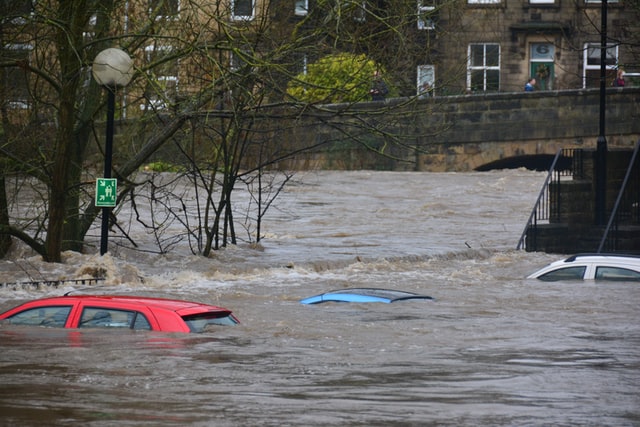
Image: Unsplash
Inaction on the part of the Brazilian government and its refusal to accept aid from the G7 countries to curb the Amazon fires raised pressing questions with respect to the responsibility and obligations of the state in protecting its environment. The Amazon, the world’s largest tropical forest, grabbed global attention when massive fires engulfed it against the backdrop of Brazil’s climate change targets that include zero illegal deforestation by 2030. The Amazon forest cover spreads over 2 million square miles, 60% of which lies in Brazil, extends into nine countries, and acts as a “cooling system for the planet” regulating the Earth’s global temperature. It is home to about 305 indigenous tribes whose very survival is at risk by deforestation. The Amazon absorbs a quarter of the 2.4 billion metric tons of total carbon soaked up by the world’s forests. However, researchers reveal that the Amazon’s carbon uptake is declining due to deforestation and forest degradation in the past few decades, contributing to significant emissions of greenhouse gases. Amazon carbon stores are enough to irrevocably alter the earth’s climate if released into the atmosphere. Harvard biologist and Amazon rainforest researcher Brian Farrell calls it “a risk for the entire planet.”
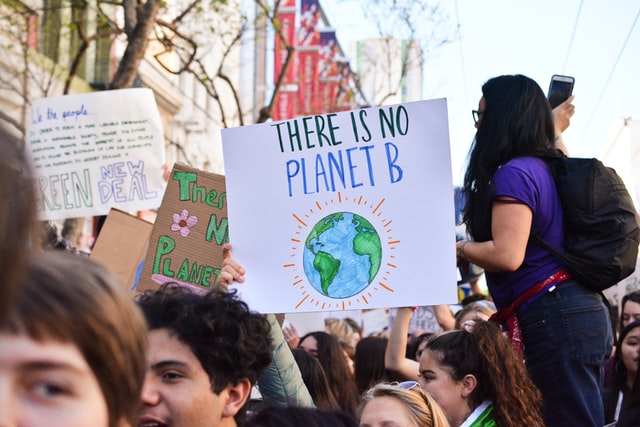
Image: Unsplash
Given its critical role in stabilizing climate, at the time when climate scientists are urging governments to curb carbon emissions, the massive release of carbon through forest fires turned Amazon fires into a global emergency. It is at times like these that the state actors should take the most ambitious measures possible to respond to the threat to non-human life. It is high time we ask questions about the obligations of states and the international community to act on behalf of climate in such a catastrophic environmental emergency. Who is to be held accountable when the future population of the entire planet is at risk? Should we start considering the laws that govern humanitarian intervention in emergencies to encompass climate crisis and the risks it entails? The Report on the Responsibility to Protect (2001) states that “when a state fails to protect its own inhabitants, either by omission or commission, the international national community must take responsibility [….] through strong non-military means, such as trade sanctions and economic boycotts.”44 It is high time we apply the same principles to our natural world and considers environmental crimes leading to catastrophic climate events as a matter of global concern.
Climate-Related Risks Threaten Peace and Security
Secondary impacts of climate-related risks threaten the peace and security dynamics of countries most affected by climate change and violate people’s fundamental rights. Climate-related risks to health, livelihoods, food security, water supply, and human security are projected to increase with global warming of 1.5 degrees, exposing populations susceptible to poverty in Africa and Asia. The impacts of climate change are highly context-specific and determined by the risk profile of the affected community and its capacity to manage climatic shocks. This could be explained by the fact that 23 countries, comprising only 14% of the world’s population have contributed to 60% of the world’s carbon emissions since 1850 and an alarming 40% of annual carbon emissions today. Yet, it is the world’s poorest that are the hardest hit by the consequences of climate change. Regions at disproportionately higher risk include the Arctic ecosystems, dryland regions, small-island developing states, and Least Developed Countries.
As climate crisis escalates, it becomes a “threat multiplier”, especially in fragile economies that lack effective coping mechanisms in the face of a changing climate, where it poses an additional security risk by worsening the threats already faced by vulnerable populations. As communities are exposed to climate-related droughts, floods, heatwaves, and other anthropogenic phenomena that cause disease, displacement, and food insecurity, it hampers social, political, and economic stability and raises concern for global security.
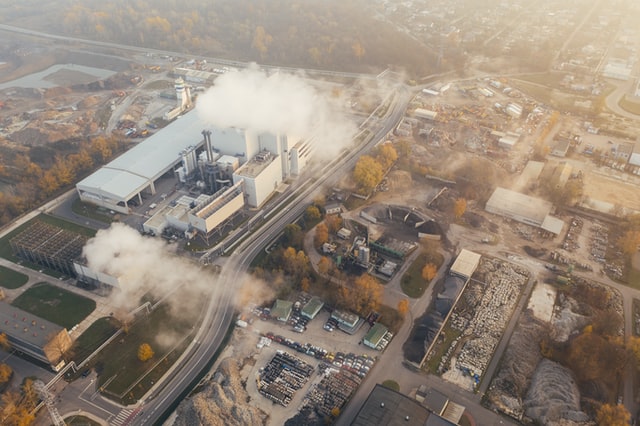
Image: Unsplash
Conflict and insurgency have been linked to ecological collapse, resource depletion, and temperature change. Conflict-ridden states are especially vulnerable to a changing climate, demonstrated by the impacts of floods and exceptionally long droughts in Yemen, Syria, Somalia, South Sudan, and Northern Nigeria. Violent conflict and recurring droughts and floods have given rise to over 2.6 million internally displaced persons (IDPs) in Somalia. In 2018, flash floods in the region affected more than 695,000 people and displaced nearly 215,000. Previously, extended droughts displaced 926,000 people between November 2016 and September 2017. The IDP camps in urban centers became breeding grounds for human trafficking, child exploitation, and recruitment of vulnerable populations in Somalia’s leading insurgent group.
The link between climate change and violence is supported by many independent studies, however, hard scientific evidence to correlate the two has not been established owing to the complexity of the phenomenon. CNA’s Military Advisory Board calls the climate crisis a “catalyst for conflict.” A UNEP study in 2011 demonstrated the link between climate change to the recurrent conflict in the Sahel region. It stated that erratic and extreme climate has depleted natural resources, leading to competition for pasture and land water, triggering clashes and violence between different clans.
“Climatic conditions are neither necessary nor sufficient for conflicts to occur, but changes in climatic conditions could have a measurable impact on the probability and intensity of conflict, holding other conflict-related factors fixed.” Stanford University scientist Marshall Burke and fellow researchers reviewed 55 studies in 2015 to gather evidence linking climate to conflict. The study concluded that “adverse climatic events increase the risk of violence and conflict, at both the interpersonal level and the intergroup level, in societies around the world and throughout history. Large variations in climate can have large impacts on the incidence of conflict and violence across a variety of contexts.”
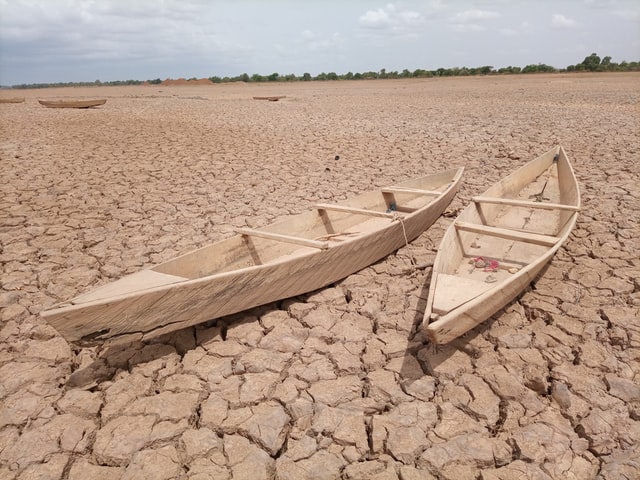
Image: Unsplash
Assessing climate change and fragility risks in the Lake Chad region has revealed that over a million people were displaced and more than seven million suffered from food insecurity due to prolonged conflict in the region. Climate change and environmental degradation have added to the volatile mix of deep-rooted inequality, long-term political marginalization, and exclusion, thereby aggravating challenges faced by communities where vulnerabilities are most acute.
Variable rainfall patterns cause water levels to fluctuate and as freshwater sources, grazing lands, and vegetation become scarce, it exposes herders and farmers to risks of violence as they compete in a landscape of resource scarcity. In 2018, 13.5 million people in Afghanistan were left on the brink of famine by a prolonged drought that resulted in the displacement of 260,000 people with agricultural livelihoods. The compounding effect of conflict and poverty has made the population severely food insecure surviving on less than one meal a day. Decades of conflict have caused land degradation increasing the risk of flash floods when it rains. On the other hand, researchers believe that recurring droughts and the resulting water conflict will exacerbate existing ethnic tensions in the region.
The UN’s global assessment on food security and nutrition has revealed that a spike in world hunger is driven by climate change and conflict that disrupts livelihoods and reduces food production. Global hunger levels are up after declining for over a decade and “some of the highest proportions of food-insecure and malnourished children in the world are concentrated in conflict zones. Many of these regions are also adversely affected by climate change.” According to UN Humanitarian Needs Overview (HNO) assessments for 2018, “4,555,699 children under the age of five will need treatment for Severe Acute Malnutrition in nine of the ten most dangerous conflict zones for children, an 18% increase from 2016.”
Peacebuilding and Sustaining Peace in a Rapidly Changing Climate
Global peacebuilding efforts are aimed at sustained social and economic development that reduce vulnerabilities and increase resilience, acting as a deterrent to violent conflict in societies. The increasing frequency of climate-related disasters in conflict-affected communities undermines the progress of peacebuilding actors striving for sustainable peace. Climate change impacts and responses are closely interconnected to the three pillars of sustainable development: social well-being, economic prosperity, and environmental protection. The UN resolutions highlight the SDGs’ priorities of sustainable economic growth and poverty eradication as vital indicators for sustaining peace, both of which are at risk by the climate crisis.
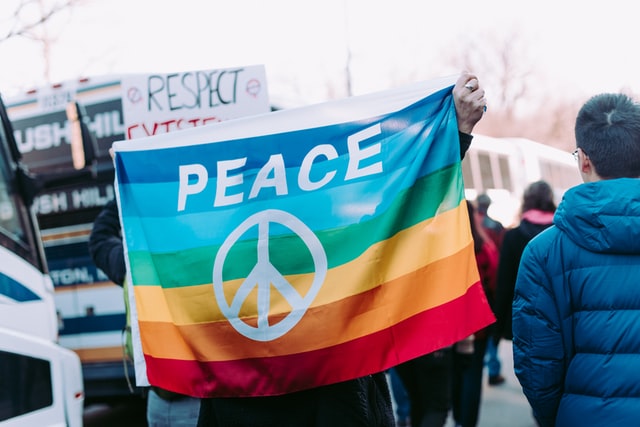
Image: Unsplash
The peacebuilding and sustaining peace report submitted to the General Assembly Security Council stressed streamlining international peacebuilding efforts to effectively support national governments. It stated that the role of crisis prevention in sustaining peace and preserving development gains, saving lives, and resources cannot be ignored. This can be accomplished through national and regional resilience-building strategies in tandem with humanitarian assistance, disaster risk reduction and management, and peacebuilding efforts.
Recognizing their crucial role in the interplay between climate change and conflict, an increasing number of UN organizations have incorporated peacebuilding and sustaining peace into their strategic plans. For example, the United Nations Children’s Fund (UNICEF) has developed a multi-risk approach that is focused on prevention and links peacebuilding to disaster risk reduction, climate change mitigation, and adaptation strategies. Similarly, The inter-agency climate security mechanism of the Department of Political and Peacebuilding Affairs, UNDP, and the United Nations Environment Programme, is developing an integrated risk assessment framework to enhance understanding of the relationships between climate change, peace and security, governance and sustainable development.
The Adaptation Goal of the Paris Agreement obliges parties to ensure an “adequate adaptation response” in efforts to limit global warming below 1.5 degrees Celsius. There is a growing body of evidence that suggests that it cannot be achieved without an increased focus on conflict-affected regions. This calls for climate-sensitive peacebuilding efforts through assessing:
a) risks to peacekeeping, peacebuilding, and conflict prevention activities by climate change
b) threats to sustaining peace due to climate change adaptation projects
c) risks that arise due to peacebuilding and development interventions that are not climate-sensitive
Short term climate-adaptation programs along with long-term resilience-building strategies are key to building sustainable peace in fragile contexts where impacts of climate change hit hardest.
In recent times, climate change has been deemed the greatest threat to global security, particularly in counties already plagued by security challenges. If we do not act now, the peace we seek will remain a farfetched dream. The year 2020 marks the 75th anniversary of the United Nations and provides us with an opportunity to take stock of global efforts and strengthen the UN system to hold governments accountable for climate change-related human rights violations. Failure of the states to take adequate actions to mitigate climate change is a violation of its human rights obligations. In light of a global catastrophic climate emergency, a recent decl

Image: Unsplash
aration submitted to the Peoples’ Summit on Climate, Rights and Human Survival focuses on recognizing climate crisis as a threat to human survival, that violates the rights of persons, groups, and peoples disproportionately affected and subjected to various forms of discrimination by climate change. It urges nations to make informed decisions and recognize human rights as the cornerstone to achieving climate justice.
We can no longer turn a blind eye to human influence impacting the variability of climate and amplifying challenges of global security. We are standing at a crossroads like never before in the history of the Earth. Our choices today will decidedly mark the future of the planet and all its inhabitants and set the foundation for years to come. Affirming the decisive role of anthropogenic activities in shaping our future and achieving the peace we seek, UN Secretary-General, António Guterres remarked, “If we do not take action on climate change now, these extreme weather events are just the tip of the iceberg… and that iceberg is also rapidly melting.”

